Are you doing enough to protect your skin from the sun? ‘Slip slop slap seek and slide’ isn’t just a catchy slogan—it’s a lifesaving routine. In our guide, discover how to effectively implement each step and turn them into daily habits for optimal sun safety and skin cancer prevention.
Key Takeaways
- The 5 S’s of sun protection – Slip on protective clothing, Slop on sunscreen, Slap on a hat, Seek shade, and Slide on sunglasses – provide a holistic approach to reduce the risk of skin cancer and protect against harmful UV radiation.
- Proper sun protection requires careful selection of products such as UPF-rated clothing, broad-spectrum sunscreen applied correctly, wide-brimmed hats, and sunglasses that meet Australian standards to ensure maximum UV protection.
- Regular skin checks are crucial for early detection of skin cancer; changes in skin appearance such as new spots or changes in moles should prompt immediate medical consultation, as early treatment can be pivotal.
Mastering the 5 S’s: A Comprehensive Approach to Sun Safety

Imagine if you could reduce your chances of developing skin cancer by following five simple steps. This is the power of the 5 S’s:
- Slip on protective clothing
- Slop on sunscreen
- Slap on a hat
- Seek shade
- Slide on sunglasses
Introduced by Cancer Council Victoria in the 1980’s, this approach has been recognised as one of the most successful health campaigns in Australia.
The beauty of the 5 S’s is their comprehensiveness. Each step addresses a different aspect of sun protection, offering a multi-faceted defense against harmful UV radiation. Whether you’re at the beach, on a hiking trail, or simply running errands, these principles can help protect your skin and reduce your risk of skin cancer.
Embrace the Slip: Your First Defense Against UV Radiation
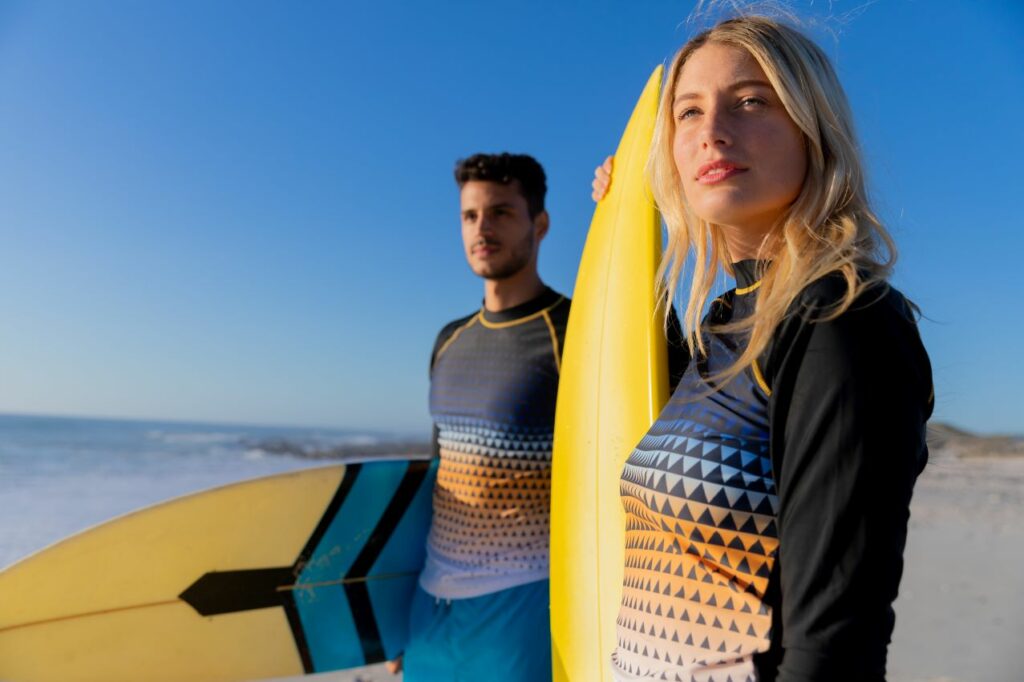
Clothing is more than just a fashion statement. It’s your first line of defense against harmful UV radiation. Wearing protective clothing, especially UPF-rated items, shields your skin from the sun’s damaging rays, preventing sunburn and long-term skin damage.
The effectiveness of your clothing in blocking UV radiation depends on several factors, including:
- Color
- Material
- Weave
- Texture
For instance, tightly woven fabrics prevent UV radiation from penetrating as much skin as possible. UPF-rated garments, in particular, offer superior sun protection. A garment with a UPF 50 rating, for example, allows only 2% of UVA and UVB rays to penetrate, providing substantial protection against sun exposure.
Adopting UPF-rated clothing is a powerful tactic to combat skin cancer.
The Slop Factor: Maximising Broad-Spectrum Sunscreen Use
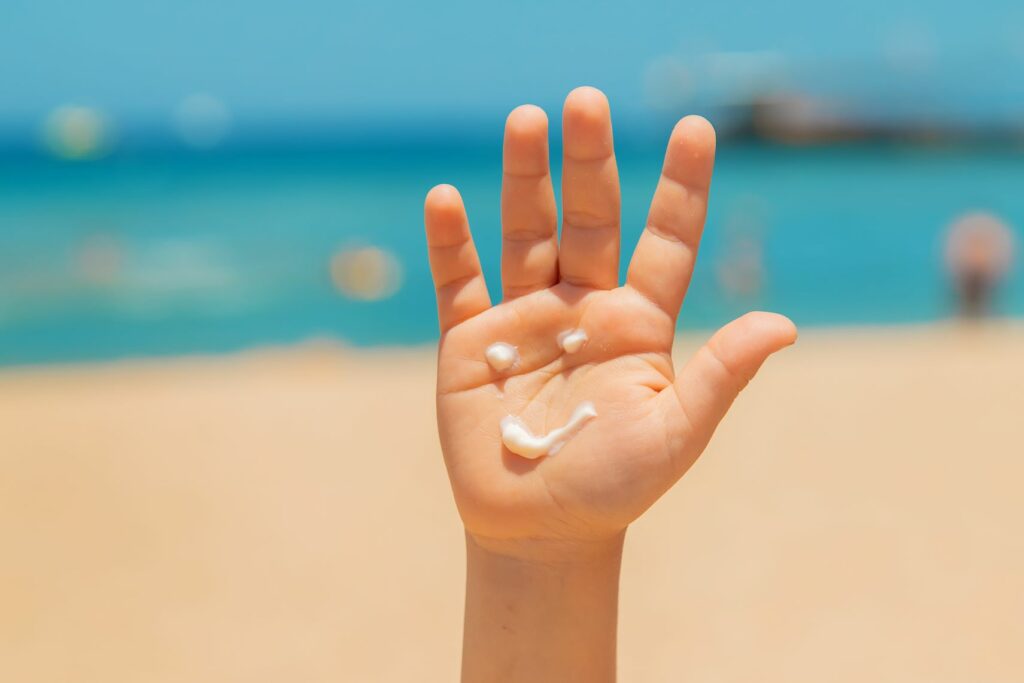
Sunscreen is a critical tool in your sun protection arsenal. However, not all sunscreens are created equal. Broad-spectrum sunscreens, which protect against both UVA and UVB rays, are recommended. These sunscreens contain key ingredients such as benzophenone, oxybenzone, and zinc oxide, which contribute to their effectiveness.
For sunscreen to offer maximum protection, correct application is imperative. Here are some tips to keep in mind:
- Use approximately seven teaspoons of sunscreen for full-body coverage.
- Apply sunscreen 20 minutes before sun exposure to allow it to properly soak in.
- Don’t forget to reapply sunscreen every two hours.
- Remember to reapply after swimming or excessive sweating.
Slap It On: Selecting the Right Hat for UV Protection
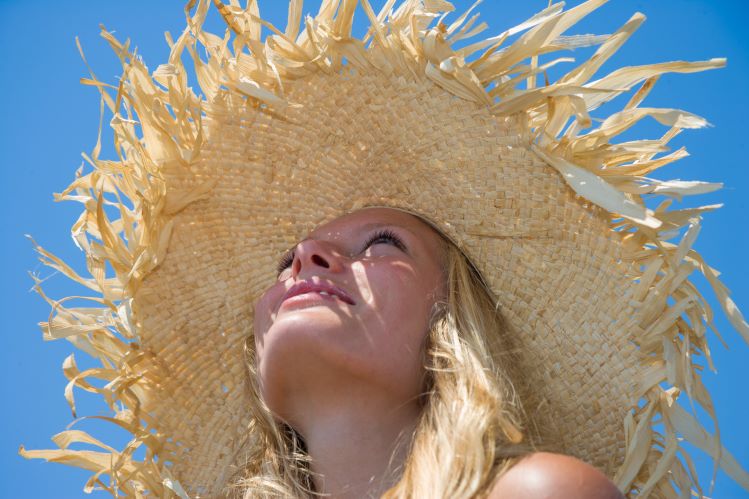
A hat does more than just keep the sun out of your eyes. It protects the face, ears, and neck, areas commonly susceptible to skin cancer. Wearing a hat and checking your skin regularly can help in the early detection and prevention of skin cancer.
The type of hat you choose matters. A broad-brimmed, legionnaire, or bucket style hat provides shade to the face, nose, neck, and ears, offering advantages such as reducing glare and eye strain and protecting the skin and eyes from UV damage. Opt for hats made from tightly woven fabrics such as cotton, nylon, or polyester, and consider those with a UPF50+ rating for the most dependable sun protection.
Seek Shade: Your Strategic Play in the SunSmart Game
While clothing, sunscreen, and hats offer substantial protection, seeking shade is another vital layer of defense against UV radiation. Whether under a tree, an awning, or a portable sunshade tent, shade helps reduce your UV exposure and lower your risk of skin cancer.
When you choose to seek shade also plays a significant role. The sun’s rays are strongest between 10 a.m. and 4 p.m., so these are optimal times to seek shade. Remember, even on cloudy or cooler days, UV radiation can still be high, so don’t forget to seek shade whenever the UV index is 3 or higher.
Slide Into UV Safety: Choosing Effective Sunglasses
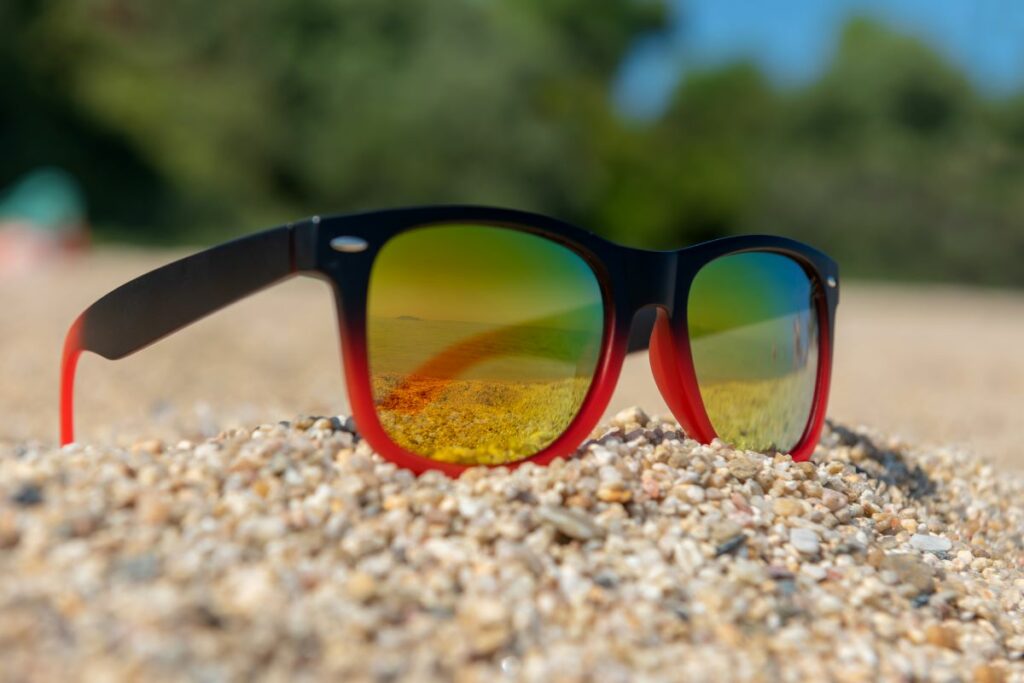
Your eyes are just as vulnerable to UV damage as your skin. That’s where sunglasses come in. But not all sunglasses provide the same level of UV protection. Sunglasses that comply with the Australian Standard AS1067 offer assurance for minimal UV exposure to the eyes.
Wraparound sunglasses are particularly effective. They fit closely to the face, blocking sunlight from entering around the edges, thus enhancing UV protection. So, the next time you’re stepping out in the sun, don’t forget to slide on those shades along with your broad-brimmed hat for comprehensive sun protection.
UV Exposure Uncovered: Understanding the Invisible Threat
UV radiation is a silent and invisible threat. It’s a form of energy emitted by the sun and certain artificial sources. Although it makes up only a tiny portion of the sun’s rays, it is a potent force, contributing to over 95% of skin cancer cases.
Despite its invisibility, because UV radiation is a component of the sun’s light, can be measured. The UV Index, a standard measurement of the strength of sunburn-producing UV radiation at a particular place and time, guides us in taking appropriate sun protection measures. A UV Index of 3 or higher calls for sun protection.
How to keep abreast of UV levels, you ask? Enter the SunSmart Global UV app.
Beyond the Heat: UV Radiation Can Deceive
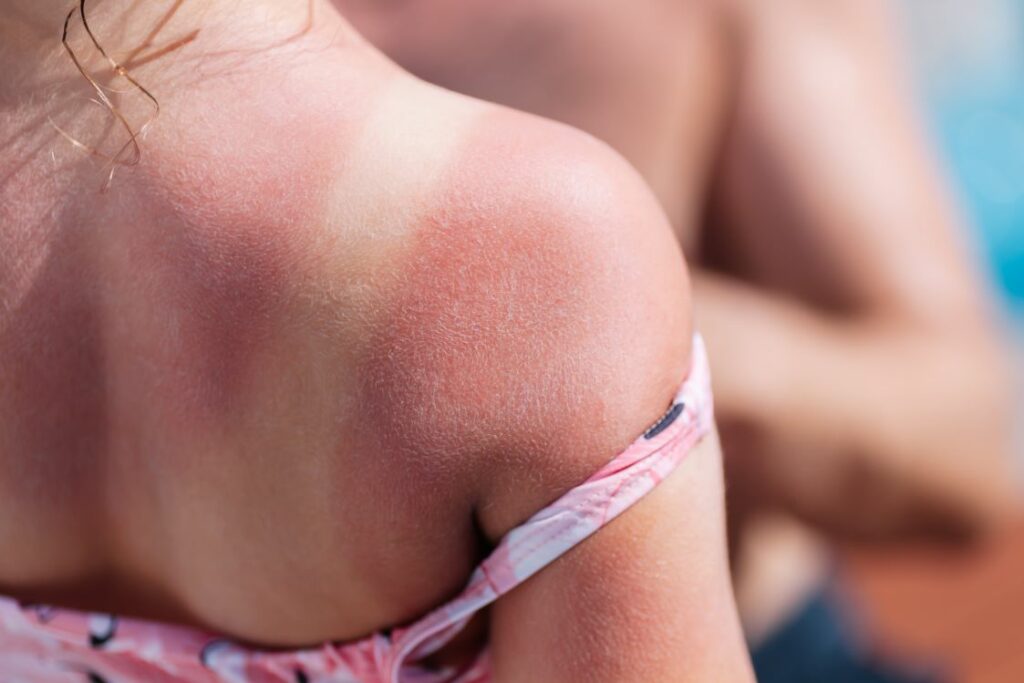
UV radiation can be deceptive. It’s not the heat of the sun that burns your skin but the UV radiation. This means that you can get sunburnt on cool or cloudy days when the UV radiation level is high. The SunSmart Global UV app helps you stay informed about sun protection times and minimize UV exposure risks.
The SunSmart Global UV app calculates sun protection times using forecast information from the Bureau of Meteorology (BOM) and live UV data from the Australian Radiation Protection and Nuclear Safety Agency (ARPANSA). It offers dependable real-time and forecast UV levels for locations sourced from reputable and trusted agencies.
The SunSmart Global UV App: Your Personalised Sun Protection Advisor
Beyond being a mere weather app, the SunSmart Global UV App serves as your personalised sun protection consultant, keeping you up-to-date with the UV Index and the need for sun protection.
Available on Apple and Android platforms, this app offers:
- Reliable real-time and forecast UV levels for locations worldwide
- Highlights recommended time slots for sun protection
- Uses data from reputable agencies and UV measuring stations to ensure accuracy.
With the SunSmart Global UV app, you can take control of your sun protection and minimise your UV exposure risk.
Skin Cancer Awareness: The Critical Need for Regular Checks
Even with all the precautions, skin cancer risk persists. Hence, the importance of regular skin checks. Early detection can lead to successful treatment of most skin cancers, especially crucial for individuals with naturally dark skin, who have a higher risk of melanoma being discovered at a later, more perilous stage.
But what should you be looking for? During self-examinations, be vigilant for early signs of skin cancer, such as moles or spots that exhibit alterations in size, shape, or color over time. If you notice any unusual changes in the skin, including new spots or those changes in the shape, color, or size of existing spots, it’s recommended to seek medical attention promptly by seeing a doctor as soon as possible.
Remember, by the age of 70, two in three Australians will have been diagnosed with some form of skin cancer.
Integrating SunSmart Habits into Daily Life
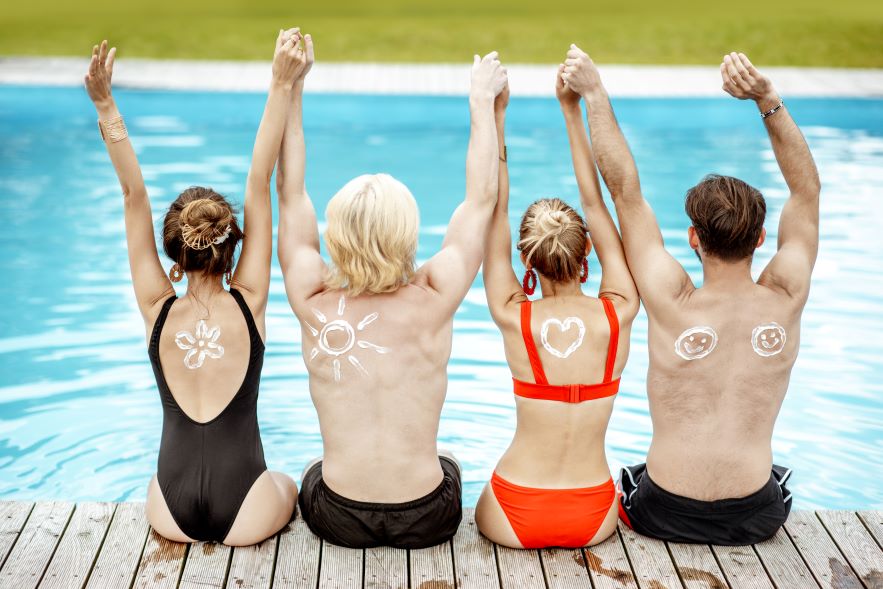
Understanding sun safety principles is vital, but incorporating them into daily life is arguably even more significant.
So, how might you weave SunSmart habits into your everyday routine? It’s about making sun protection a natural habit, regardless of whether you’re engaged in fitness activities, have a hectic schedule, or are indulging in leisure pursuits.
Be intentional to never leave home without sun smart clothing, sunscreen, hat and sunglasses. Leaving back-up supplies of these essentials in your car or favourite backpack is a handy way of making sure you’re never caught short of sun protection when you really need it. Consider downloading the SunSmart Global UV App onto your smartphone to help remind you of the dangers of UV exposure and benefits of sun safety.
Summary
In conclusion, sun safety is not a seasonal concern but a year-round commitment. By mastering the 5 S’s of sun safety, understanding the invisible threat of UV radiation, regularly checking your skin, and integrating SunSmart habits into daily life, you can significantly reduce your risk of skin cancer and foster a healthier relationship with the sun.
Remember, sun protection isn’t just about shielding your skin from the sun’s rays; it’s about adopting a comprehensive approach to sun safety, because every layer of protection counts.
Looking for quality first aid training? Join the ranks of competent first aid responders by enrolling in our nationally recognised First Aid Training at First Aid Pro. Equip yourself with the skills to respond to emergencies confidently and effectively. Whether it’s at home, work, or in public, be the one ready to make a difference.
Want more? Explore our First Aid Pro Blog! Loaded with informative health guides, it’s your go-to resource for staying informed and prepared. From first aid tips to the latest in health safety, our blog is a treasure trove of knowledge waiting for you.
Frequently Asked Questions
Slip Slop Slap Seek, and Slide is a campaign by the Cancer Council to promote sun protection and prevent skin cancer in Australia and New Zealand. It emphasises the importance of seeking shade and wearing wraparound sunglasses in addition to slipping on a shirt, slopping on sunscreen, and slapping on a hat.
To stay safe in the sun, remember the 5 S’s: slip, slop, slap, seek, and slide. Protect yourself by following these guidelines.
Yes, the Slip Slop Slap campaign worked, and it played a key role in shifting sun protection attitudes leading to reduced incidences of melanoma (for people born after 1980.
Wearing UPF-rated clothing can act as a physical barrier against UV rays, with the effectiveness depending on factors like color, material, weave, and texture. So, choose your clothing carefully to maximize UV protection.
To maximise the protection offered by sunscreen, use a broad-spectrum sunscreen with an SPF of 30 or higher (+50 SPF is ideal), apply a sufficient amount 20 minutes before sun exposure, and reapply every two hours or after swimming or sweating. These steps will help ensure thorough coverage and effectiveness.
